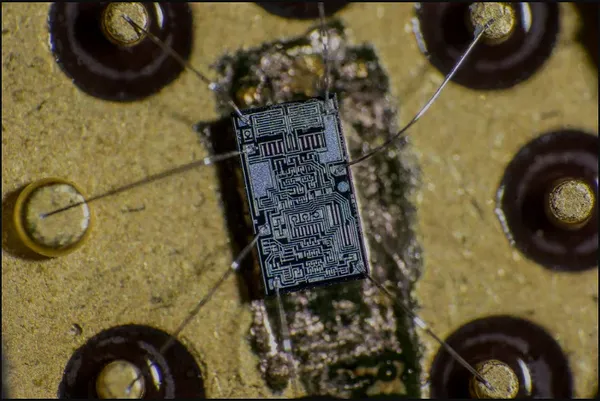

Technology in the past may seem rudimentary compared to today’s sophisticated gadgets, but it was a vital part of shaping civilizations. From the development of simple tools to intricate systems, ingenuity always existed throughout history. This article explores the fascinating world of technology in the past, examining the various inventions, and how they laid the foundation for modern technology. The historical progression of technology can inspire us to appreciate our present and spark our creativity for future innovations. We will explore the development of tools and machines, understanding the problem-solving techniques and innovations that shaped societies throughout history. This article will delve into specific examples of past technologies, their functions, and their lasting impact on human civilization. This will cover a wide range of topics, from agriculture and transportation to communication and warfare. By understanding how past technologies were developed and utilized, we can better understand the path of progress that has brought us to the technologies we have today.
Early Tools and Inventions
Shaping Early Societies
Early humans relied on simple tools for survival, from stone axes to bone needles. These tools, while seemingly basic, revolutionized daily activities, enabling hunting, gathering, and shaping their environment. The development of these initial tools represented a crucial step in the history of human progress. These basic tools empowered early humans to overcome practical challenges, effectively changing the trajectory of survival and civilization. Examples of such tools are the hand axe, used for chopping wood and hunting, and the spear, which enhanced hunting capabilities and provided a method of protection. The evolution of these tools often mirrored the advancement of human knowledge and understanding, showcasing the link between practical problem-solving and development.
The Impact of Early Inventions
The introduction of agriculture and the development of tools for farming were momentous steps. The invention of the plow, for example, dramatically increased agricultural productivity, leading to the growth of settled communities and the development of complex societies. These innovations also created the foundation for more complex societal systems to emerge. These early inventions and tools became pivotal to the development of human society, showcasing the impact of practicality and the drive for a better future.
Innovations in Agriculture
Cultivating a Better Future
Beyond tools for everyday survival, the development of technology focused on agriculture was also pivotal in shaping civilization. Ancient irrigation systems, such as those in Mesopotamia, are impressive examples of early engineering, demonstrating a profound understanding of water management and crop cultivation. These systems played a critical role in sustaining large populations and fostering the growth of cities.
The Impact of Irrigation Systems
Advanced irrigation systems supported the growing population and allowed for increased crop yields, which were crucial for supporting larger settlements. These improvements led to surpluses in food production, allowing for specialization and the development of more complex social structures, ultimately resulting in civilizations.
Transportation Technology
Connecting Distant Lands
Transportation technologies were essential for trade, communication, and warfare. From the invention of the wheel to the development of sailing ships, these innovations facilitated the movement of people and goods across long distances. The development of these transportation tools and systems was often a response to the need for trade and communication, a crucial factor for societal expansion.
Navigating the Waters
Sailing vessels were crucial for long-distance trade and exploration. The development of sailing ships, like the dhows and junks of the ancient world, transformed trade routes and enabled the exchange of ideas and goods across vast stretches of water. These innovations facilitated the growth of coastal cities and promoted cultural exchanges across different societies.
Communication Technologies
Bridging the Gap
Early forms of communication, like writing systems and signal fires, were crucial for coordinating activities, sharing information, and maintaining order within communities. From hieroglyphics to cuneiform, these systems laid the groundwork for written history and enabled the transmission of knowledge across generations. These systems helped facilitate the sharing of information and knowledge.
Sharing Information Across Cultures
The development of these communication technologies fostered the sharing of knowledge across cultures, enabling the exchange of ideas and experiences, and advancing collective understanding. The ability to communicate across distances broadened understanding and fostered societal growth.
Warfare and Military Technology
Defending and Expanding
Throughout history, warfare has been a driving force behind technological advancements. From the development of bronze weapons to the creation of siege engines, innovations in military technology often reflected the needs of conflict and expansion. The desire for dominance and survival often pushed the frontiers of technological development and innovation, with the development of military technologies driving societal advancement.
The Impact of Military Technology
The advancement of weaponry often had a considerable impact on the outcome of battles and the course of civilizations. The widespread use of these new technologies significantly changed the balance of power within societies, and shaped the course of human history. These advancements in military technology often marked the turning points in the history of civilizations.
Ancient Computing Devices
Mechanical Calculation Tools
Ancient civilizations demonstrated remarkable mathematical and engineering capabilities, even without the sophisticated technologies of today. Devices like the Antikythera mechanism, a complex astronomical calculator from ancient Greece, showcased an impressive grasp of mechanics and astronomical principles. This device was a significant step toward the development of more advanced computing tools. These calculations contributed to the development of complex mechanical devices, such as the Antikythera mechanism.
Understanding Time and Astronomy
The Antikythera mechanism, along with other mechanical astronomical calculators, highlights how past societies tackled complex problems and engaged in profound understanding of the universe. These devices demonstrate the keen intellectual capabilities of the past and the evolution of calculation methods.
Frequently Asked Questions
What are some of the earliest forms of technology found in past civilizations?
Early forms of technology were often simple tools crucial for survival, like stone tools for hunting and agriculture. These initial technologies helped early humans adjust to their environment and developed more complex tools for the purpose of survival, a key driving force behind innovation in early civilizations. The development of more advanced tools often indicated a heightened level of understanding and sophistication within the societies that used them. Examples include the development of the plow, which enhanced agricultural production, leading to the expansion of settled communities. Such advancements fundamentally impacted the development of early civilizations.
How did technology in the past affect different cultures?
Technology in the past significantly impacted different cultures, shaping societal structures, cultural exchanges, and economic development. The development of tools and techniques facilitated trade and communication, leading to the exchange of ideas and resources. This often fostered cultural diffusion, contributing to the overall progress of societies. For example, the invention of the printing press allowed for the wider dissemination of knowledge and ideas, fostering intellectual growth across societies and contributing to the spread of culture and information. This demonstrates how the spread of technology influences societal evolution.
In conclusion, the existence of technology in the past, though not in the same form we know it today, is undeniable. From ancient tools to complex systems like the water clock, ingenuity and problem-solving always existed. Understanding the historical progression of technology helps us appreciate the present and inspires future innovations. To explore further, delve into the rich history of technological advancements and discover how they shaped civilizations. Visit our website for more fascinating articles on the history of innovation and the ongoing evolution of technology.